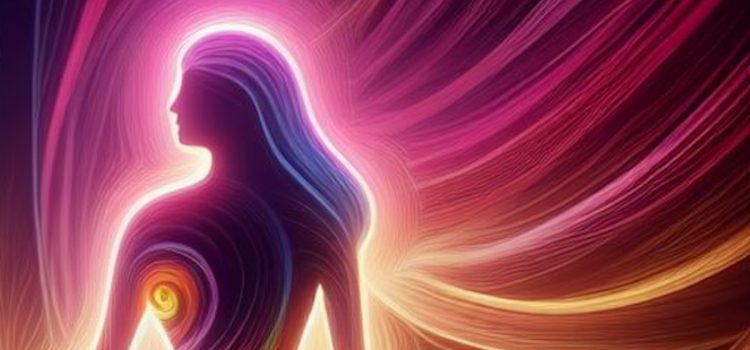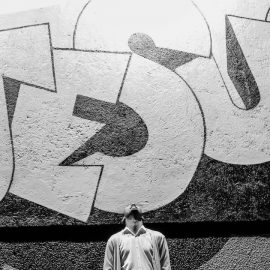
What are the parts of the self? Are they mortal or immortal?
When you die, only one part of you dies. And, that part isn’t really you. That’s the view of Sadhguru, a spiritual teacher based in India. In his book Death: An Inside Story, he explains his concept of the self and its components.
Keep reading to learn about the two parts of the self and why Sadhguru’s perspective might give you some encouragement.
The 2 Parts of the Self
Sadhguru contends that, to be free of the fear of death, you must become aware of certain spiritual truths. Specifically, he asserts that the individual self is an illusion. What you perceive to be “yourself” primarily consists of two parts: karma and life energy. However, the part of yourself that’s conscious—who “you” really are—is life energy alone, and this energy persists beyond death eternally. Let’s break down Sadhguru’s concept of the parts of the self.
Component #1: Karma
Sadhguru explains that “karma” isn’t a means of universal judgment, as some may assume. Rather, he defines karma as a broad category of information from the past that builds up over time and manifests in some form. Your genetics, personality, atomic structure, and conscious memories are all different kinds of karma.
| How Karma Relates to Justice Sadhguru holds a broader view of karma than some other spiritual practitioners, who describe it in a way that more closely relates to universal judgment or justice. According to the Buddhist monk Mahasi Sayadaw, every moral action returns beneficial results and every immoral action yields harmful results—either in this life or in future lives. For instance, if you live a life of greed, you’ll likely suffer more in this life (perhaps by hurting and pushing away loved ones). You’re also more likely to be habitually greedy in your next life, perpetuating your suffering. In the same way, the conditions of life you’re experiencing now—including your genetics and personality—are the direct karmic results of your actions in past lives. |
Component #2: Life Energy
According to Sadhguru, the other main component that makes up who you are is life energy, or consciousness. This word describes how self-aware someone—or something—is. Sadhguru asserts that everything in the universe is self-aware to some degree. The more self-aware a part of the universe is, the more of this kind of “energy” we can say it has.
When you die, Sadhguru says, almost all of the karma that makes up your identity is destroyed. Your body, mind, and memories of past experiences no longer exist. However, your life energy—the part of you reading these words right now—lives on everywhere else in the universe. Because of this, Sadhguru goes as far as to say that death doesn’t really exist; it’s just a transition to a different form of life.
The only reason you fear death is because you mistakenly believe that “you” are karma rather than life energy. You believe that your body is “you,” your emotions are “you,” and your memories are “you.” Once you realize that these are all things that occur outside of “you,” you’ll understand that losing them won’t be painful, and you’ll no longer be afraid.
| The Nature of Consciousness in Hindu and Buddhist Philosophy By describing consciousness as a unified energy that makes up the entirety of the universe, Sadhguru echoes the teachings of Advaita Vedanta, a school of Hindu philosophy influenced by Buddhism but more aligned with Hindu scriptures. In Advaita Vedanta, the life energy Sadhguru discusses here is called “chaitanya.” Chaitanya takes multiple forms, and Sadhguru’s description of life energy corresponds to two of them: brahma-chaitanya, an all-encompassing universal consciousness, and jīva-chaitanya, the individual consciousness inside you. To paint a more complete picture, Advaita Vedanta identifies two more forms of consciousness: isvara-chaitanya, the intelligent, godlike consciousness of the universe; and sāksi-chaitanya, the consciousness within individuals that observes your conscious thoughts and feelings. On the other hand, by echoing Advaita Vedanta, Sadhguru seems to be leaning away from traditional Buddhist teachings. The Buddha rejected the idea that the universe was made of a cosmic oneness. Instead, one of the basic tenets of Buddhism is the belief in śūnyatā, or the fundamental emptiness of all things. That is, Buddhists believe that everything in the universe is constantly changing. Thus, nothing that exists has any true, permanent form—everything is “empty” of intrinsic identity. Like Sadhguru and Advaita Vedanta, Buddhist philosophy teaches that death is nothing to be afraid of. Buddhists argue that people fear death because they’ve irrationally built an attachment to their lives and everything in them. Because the fundamental essence of the universe is change, attachment to any part of it will inevitably result in suffering. By accepting the fundamental emptiness of the universe and living your life accordingly, you can cease your attachment and free yourself from the fear of death, along with all other suffering. The Buddha put these ideas at the center of his teachings—they constitute his “Four Noble Truths.” The distinction between the Advaita Vedanta and Buddhist views of consciousness can be a little hazy and confusing. What’s the difference between formless, universal consciousness and fundamental emptiness? |






